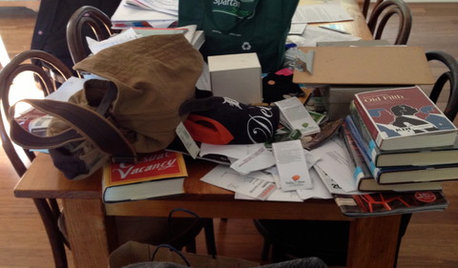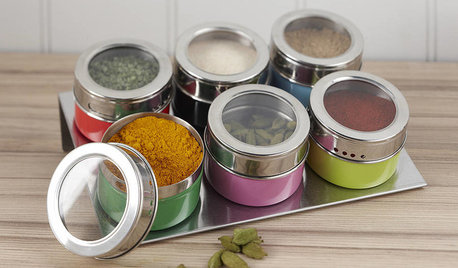Critique my bin!!
ozzz
12 years ago
Related Stories

LIFEAnatomy of a Family-Size Mess
Study your home’s dumping grounds to figure out what organizational systems will work — then let yourself experiment
Full Story
REMODELING GUIDES15 Ways to Design an Easy-Clean Home
Spend more time doing what you love with these pointers for minimizing cleaning needs throughout the entire house
Full Story
KITCHEN DESIGNKitchen of the Week: Updated French Country Style Centered on a Stove
What to do when you've got a beautiful Lacanche range? Make it the star of your kitchen renovation, for starters
Full Story
STORAGE5 Tips for Lightening Your Closet’s Load
Create more space for clothes that make you look and feel good by learning to let go
Full Story
DECORATING GUIDESBring in da Funk: How Humble Touches Give a Home Soul
Shake up expectations and stir up interest with pieces that show patina, create contrast or offer a jolt of surprise
Full Story
MOST POPULARMy Houzz: Hip Midcentury Style for a Mom's Backyard Cottage
This 1-bedroom suite has everything a Texas mother and grandmother needs — including the best wake-up system money can't buy
Full Story
HOUZZ TOURSMy Houzz: Modernism Takes a Natural Turn in Pennsylvania
Generous wood throughout and woodsy sights outdoors soften and warm this home’s modern lines
Full Story
LIFEYou Said It: ‘Yikes, Tough Crowd’ and Other Quotes of the Week
Some of our favorite quotes this week came straight from the Comments section. See the stories and have your own say
Full Story
PRODUCT PICKSGuest Picks: Spice Up Your Spice Rack
The right spice rack adds a pinch of style and a dash of functionality to any cook's kitchen
Full Story
KITCHEN DESIGN12 Rustic Touches That Add Warmth to a Kitchen
Exposed beams, chandeliers, farm tables or just a key accessory or two can bring some coziness to the heart of your home
Full StoryMore Discussions






equinoxequinox
patrick1969
Related Professionals
Comstock Park Landscape Architects & Landscape Designers · Manorville Landscape Architects & Landscape Designers · Forest City Landscape Architects & Landscape Designers · Frisco Landscape Contractors · Allentown Landscape Contractors · Harrisburg Landscape Contractors · Lake Worth Landscape Contractors · New Providence Landscape Contractors · Winchester Landscape Contractors · Baileys Crossroads Landscape Contractors · Chesapeake Ranch Estates Stone, Pavers & Concrete · Arlington General Contractors · Groveton General Contractors · Medway General Contractors · Waianae General Contractorssbryce_gw
equinoxequinox
patrick1969
morgan_3
11otis
patrick1969
JerilynnC
maden_theshade
equinoxequinox
patrick1969
patrick1969
colin3